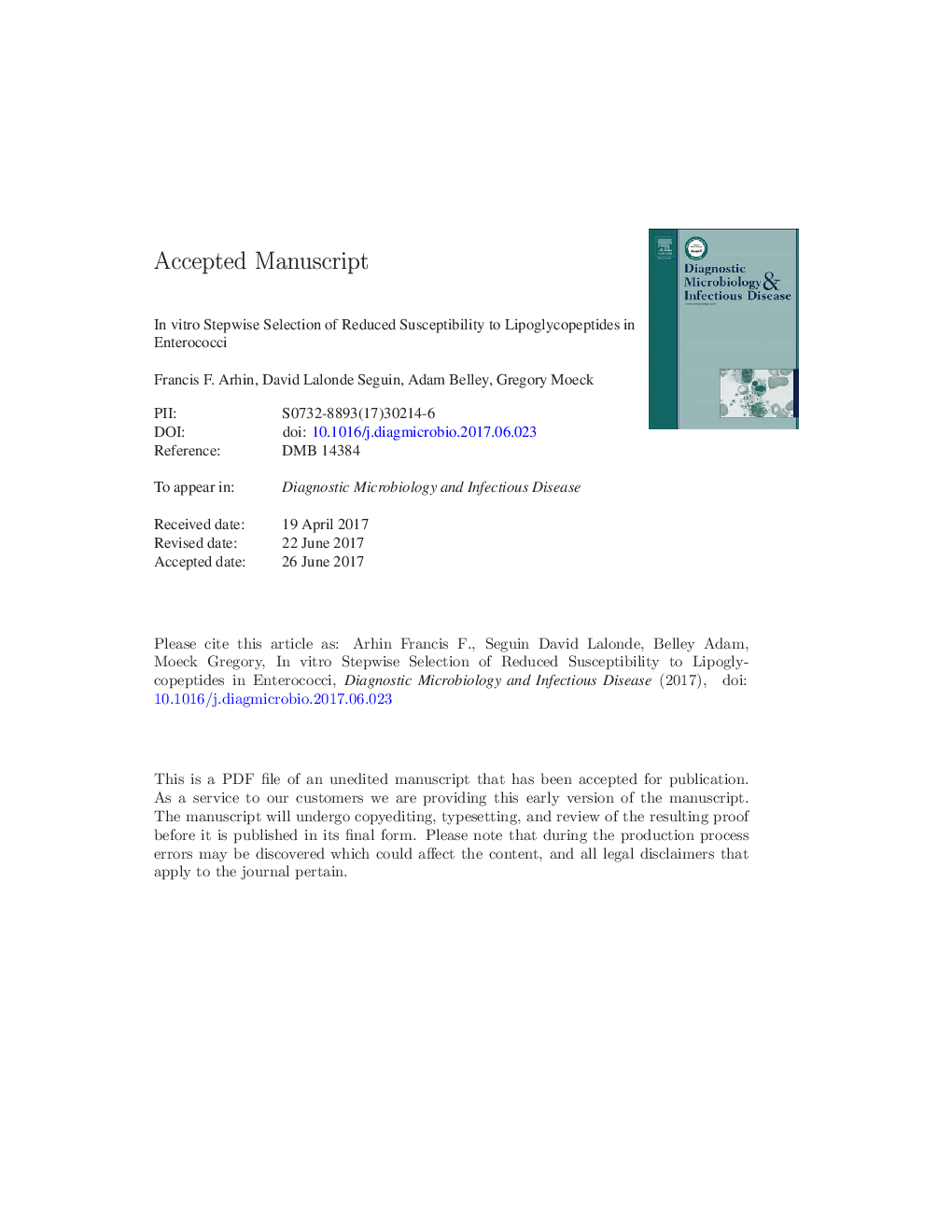| Article ID | Journal | Published Year | Pages | File Type |
|---|---|---|---|---|
| 8737425 | Diagnostic Microbiology and Infectious Disease | 2017 | 18 Pages |
Abstract
The propensity of oritavancin to select for stably elevated oritavancin minimum inhibitory concentrations (MICs) was studied by serial passaging of strains in broth containing oritavancin for 20Â days. Seven clinical strains of Enterococcus faecalis and E. faecium were studied; they included vancomycin-susceptible and both VanA and VanB vancomycin-resistant isolates. Stepwise oritavancin selection yielded stably elevated oritavancin MICs in six of the seven strains, with MIC increases ranging from 4-32-fold. By comparison, stepwise selection with comparator agents dalbavancin (4- to >128-fold MIC increases), telavancin (4-8-fold MIC increases) and daptomycin (4-32-fold MIC increases) also yielded selectants with elevated MICs of the respective agents. Oritavancin selectants retained parental MICs of vancomycin, daptomycin, linezolid and rifampicin. Some, but not all of the oritavancin selectants also showed MIC increases to the lipoglycopeptides telavancin, dalbavancin and teicoplanin, suggesting that within the lipoglycopeptide class, different mechanisms of action may be elucidated.
Related Topics
Life Sciences
Immunology and Microbiology
Applied Microbiology and Biotechnology
Authors
Francis F. Arhin, David Lalonde Seguin, Adam Belley, Gregory Moeck,
